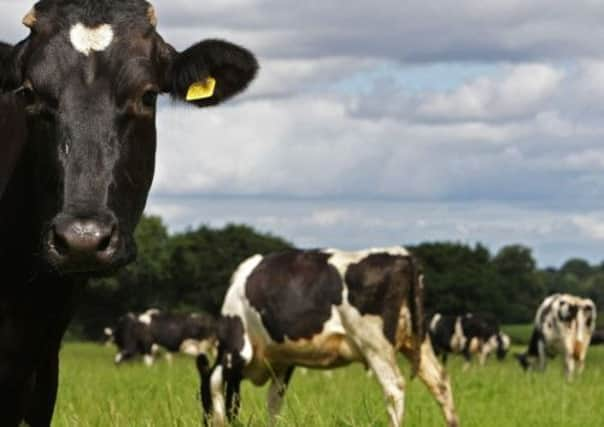Diseased cows with TB ‘fit for human consumption’


The raw meat, from about 28,000 diseased animals a year, is banned by most supermarkets and burger chains, a Sunday newspaper reported yesterday.
Tesco, for example, rejects it because of “public-health concerns surrounding the issue of bTB and its risk to consumers”.
Advertisement
Hide AdAdvertisement
Hide AdBut it is being sold to caterers and food processors, and finding its way into schools, hospitals and the military, or being processed into products such as pies and pasties, the newspaper said.
A Defra spokeswoman said: “All meat from cattle slaughtered due to bovine TB must undergo rigorous food safety checks before it can be passed fit for consumption.
“The Food Standards Agency has confirmed there are no known cases where TB has been transmitted through eating meat and the risk of infection from eating meat, even if raw or undercooked, remains extremely low.”
The meat is sold with no warning to processors or consumers that it comes from infected cattle.
Asked whether the public should know whether or not the
meat they are buying originated from an infected cow, a spokeswoman for the Food Standards Agency said: “All meat must be marked with an identification mark, which will indicate the approval number of the plant of origin.
“However, meat from TB reactors, once it has been passed as fit for human consumption, is not required to be marked in any way to distinguish it from other meat.
“Meat which passes the post mortem inspection is fit for human consumption and does not need additional labelling.”
If an inspection of a carcase reveals tuberculous lesions in more than one organ or region it is declared unfit for human consumption and destroyed, she explained.
Advertisement
Hide AdAdvertisement
Hide AdBut if only one organ or part of the carcase is infected, that area is removed and the rest is considered safe to enter the food chain.
She added: “Cooking this meat would be an additional safety step, but we would emphasise the risk even before cooking is very low.”
The newspaper reported that Defra’s reassurances contrasted with warnings from experts, who have said rising levels of bTB in cattle are becoming a serious threat to human health.
Such claims have been used to justify a cull of badgers, which are said by some to help spread the disease between cattle.
Hugh Pennington, emeritus professor of bacteriology at the University of Aberdeen, said it was very uncommon for TB to be passed to humans through meat.
“The big problem with cattle and TB was milk,” he said. “A lot of people used to get TB from unpasteurised milk, which is why it is illegal to sell unpasteurised milk. Generally, TB is not spread through eating meat – because the meat is cooked, which would kill any bacteria.”
Prof Pennington said Scotland was lucky to have herds that are relatively free from TB.
“This is much more of an English problem,” he added. “There is much more TB in cattle in the south-west of England.”
Advertisement
Hide AdAdvertisement
Hide AdAndrew Opie, food director at the British Retail Consortium, said: “Meat supply chains are rigorously controlled by the Food Standards Agency who inspect carcasses to ensure they are fit for consumption.
“This includes checks for TB and strict controls to deal with it if it is discovered.
“If they declare meat fit for human consumption we see no reason why that meat should carry any additional labelling.”